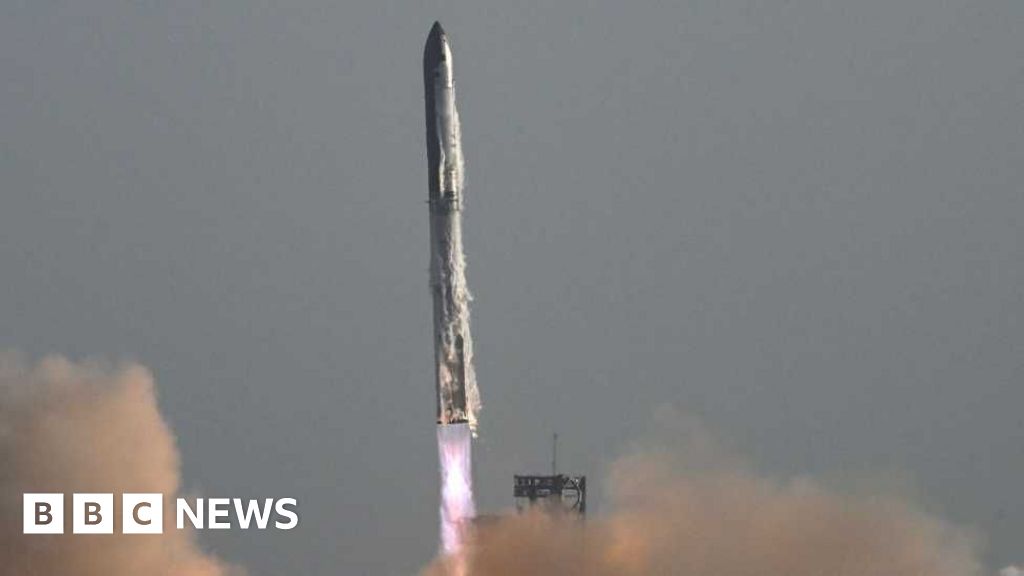The war in Ukraine appears to be driving a sharp increase in shipments of Russian oil to China through the Bering Strait, prompting new warnings that the traffic threatens the isolated villages and residents’ fish and wildlife harvests on the American side of the border.
“I feel pretty confident that it’s the start of a trend,” said Andrew Hartsig, the Anchorage-based senior director of the Ocean Conservancy’s Arctic program. He added: “Alaska’s communities and coastlines are at risk in the event of an accident.”
So far this summer, at least five tankers have set out carrying Russian crude across the Northern Sea Route to China, according to Bloomberg — a voyage that, for oil tankers, had been attempted just twice before.
An Arctic-focused publication, High North News, said that the traffic is going both ways: The second-ever large container ship to transit the sea route left China in early August bound for St. Petersburg.
Experts warn that an Arctic oil spill could be catastrophic. With high shipping costs typically translating into steep prices for groceries, foods harvested from the ocean — fish, whales, seals, walrus — are essential for subsistence.
“That’s our main source of food security, from the Bering Sea,” Ben Pungowiyi, the president of the tribal government in the 800-person village of Savoonga, said in an interview.
Policymakers and advocates have long predicted that global warming-driven sea ice melt will make the Northern Sea Route — from Northern Europe to Asia through the Bering Strait — increasingly attractive to the global shipping industry.
If summer ice conditions allow, passage across the Arctic can cut shipping times by two weeks over the traditional Russia-to-Asia route through the Mediterranean Sea and the Suez Canal.
And the Ukraine conflict appears to be accelerating that trend, as Western sanctions cut off European markets and leave China and India as Russia’s two largest customers for oil.
While the ships are free to pass through the Bering Strait, its 55-mile width means that any spills would be likely to drift toward Alaska communities. Advocacy groups, residents and the government officials who represent them say that the increased traffic underscores the need for the U.S. government to enhance its programs and infrastructure to respond to accidents.
“We’re concerned about it and we’re pushing, hoping to get some funding,” Pungowiyi said. “We’re right smack in the middle of the Bering Strait, and you want to be able to respond.”
Savoonga, 150 miles south of the strait on St. Lawrence Island, is one of several villages near the Northern Sea Route that could be harmed by an oil spill or other shipping-related accidents.
Other communities include Wales, population 160, at the edge of the American side of the strait; Gambell, also on St. Lawrence Island, with 600 residents; and Diomede, a tiny island community in the middle of the strait with just 80 people.
None of those villages currently has substantial spill response infrastructure, or a major harbor where ships could be docked. Diomede lacked functional phone service Friday, with residents unable to place outgoing calls and incoming calls cutting off after a few seconds.
Pungowiyi, in Savoonga, said his tribe is advancing a project to further develop its small harbor to accommodate larger vessels.
In Nome, the regional hub town to the southeast, the nation’s first deepwater Arctic port is in development, which could support U.S. Coast Guard operations in the area. It won’t be ready to use for several years, though a nonprofit response organization currently maintains an inflatable skiff in Nome and booms used to contain spills, according to an online inventory.
Alaska leaders are tackling the challenges posed by increased activity in the Arctic “on multiple fronts,” said Republican U.S. Sen. Dan Sullivan.
“But I think we’re still behind,” he said.
Sullivan, in an interview, pointed to a parallel increase in Russian and Chinese military vessels operating in and around the Bering Sea.
“What we’ve been doing is trying to awaken the rest of the federal government to the fact that the Arctic is not just some parochial interest of Alaska, but a national strategic interest of our country,” he said.
The U.S. dispatched several warships and aircraft a few weeks ago to shadow a joint China-Russia patrol near the Aleutian Islands. But Sullivan said that the nearest port that could dock a Navy destroyer or icebreaker is in Anchorage or Dutch Harbor, more than 800 miles from the Bering Strait.
In addition to last year’s announcement of $250 million in federal money for the Nome port, Alaska’s Congressional delegation has helped pass additional Arctic-focused legislation. One recent measure established a committee to recommend new policies around Arctic maritime transportation, with three Alaska Native tribal members, several Biden administration employees and nominees from the Washington and Alaska governors.
Another bill, with a push from Sullivan, created a civilian position at the Coast Guard to oversee Alaska oil spill planning guidelines. And a proposal still pending in Congress would require a study of Bering Sea traffic projections and emergency response capabilities.
Experts say that while the Arctic environment around the Bering Sea would make cleaning up an oil spill a nightmare, Russia has maintained good standards for its tanker fleet and crews — though Hartsig, with the Ocean Conservancy, said one concern is if traffic increases to the point where those standards are reduced for vessels on the Northern Sea Route.
He and others point to reports earlier this year that Russian state-owned and private energy companies were discussing the use of icebreaker-accompanied conventional tankers, not just ice-reinforced vessels, on the route.
One other major challenge in managing the risk of the new oil shipments is that the Ukraine war has diminished previous levels of cooperation between the U.S. and Russia.
Maritime experts have proposed ideas like government pre-authorization for icebreakers from either country to cross the strait to respond to oil spills, said Paul Fuhs, a former mayor of the Aleutian town of Unalaska who’s worked on international maritime issues.
Fuhs said he’s continued working with the Alaska Marine Exchange, a Juneau-based nonprofit that collects and monitors navigational information, to continue pushing for cooperation on safe Arctic shipping practices. But the war has thwarted work in the Arctic Coast Guard Forum, an international organization that once brought Russian and American authorities together, Fuhs said.
“That was a real disappointment to me,” Fuhs said.
The U.S. Coast Guard has also seen direct collaboration with the Russians fall through. The agency was scheduled to hold a joint oil spill response exercise with Russia off Nome earlier this year, but the Russians pulled out.
“I can confirm Russia was originally scheduled to participate, but cannot speculate as to why they weren’t able to follow through with that participation,” Melissa McKenzie, an Anchorage-based Coast Guard spokeswoman, said in an emailed statement.
“We are aware of the presence of Russian vessels in the region, but their presence has not impacted Coast Guard operations,” McKenzie added. “We will continue to patrol our nation’s maritime border in the Bering Sea, Bering Strait, and Chukchi Sea, with our largest and most capable cutters and aircraft, to protect U.S. sovereign interests, U.S. fish stocks, and to promote international maritime norms.
Originally published at Northern Journal. Anchorage-based independent journalist Nathaniel Herz has been a reporter in Alaska for nearly a decade, with stints at the Anchorage Daily News and Alaska Public Media. Read his newsletter, Northern Journal, at natherz.substack.com.

:quality(70)/cloudfront-us-east-1.images.arcpublishing.com/adn/XZCDSD375BEENPOAJRW5V2FJQU.webp)



























